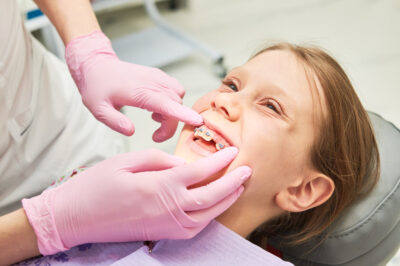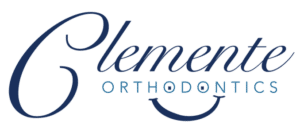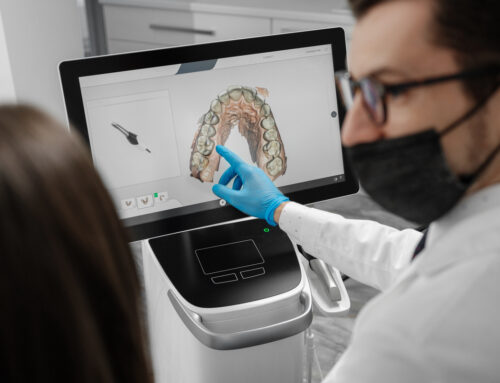 The path to a healthy, confident smile begins far earlier than many parents realize. While many think of braces as a teenage rite of passage, addressing certain orthodontic issues during childhood can significantly reduce complications and treatment time later. This proactive approach, known as phased orthodontic treatment, allows us to guide jaw development and tooth appearance during a child’s most critical growth periods.
The path to a healthy, confident smile begins far earlier than many parents realize. While many think of braces as a teenage rite of passage, addressing certain orthodontic issues during childhood can significantly reduce complications and treatment time later. This proactive approach, known as phased orthodontic treatment, allows us to guide jaw development and tooth appearance during a child’s most critical growth periods.
At Clemente Orthodontics, our multigenerational family practice has proudly served the Bergen and Rockland County communities since the 1970s. Dr. Michael and his daughters, Dr. Nicole and Dr. Marissa, work together as one seamless team to provide comprehensive orthodontic care that addresses both immediate concerns and long-term developmental needs for growing children.
Understanding Phased Orthodontic Treatment
Phased orthodontic treatment divides care into strategic stages that align with a child’s natural growth and development. Rather than waiting until all permanent teeth have come in, this approach allows us to address specific issues at optimal developmental windows.
The primary benefit of phased treatment lies in its timing. By intervening while a child’s jaw is still growing, we can guide development in ways that become impossible once growth is complete. This proactive approach often leads to simpler treatment in adolescence and potentially avoids more invasive procedures later in life.
Phase One: Early Intervention (Ages 7-10)
Phase One treatment typically begins while children still have a mixture of baby teeth and permanent teeth. This stage focuses primarily on jaw development and making room for permanent teeth that haven’t yet come in.
When Early Intervention Makes Sense
Not every child requires Phase One treatment. We recommend this approach specifically for children showing signs of:
- Severe crowding that will prevent permanent teeth from growing in properly
- Crossbites or underbites that affect jaw growth
- Protruding front teeth vulnerable to injury
- Harmful oral habits like thumb-sucking affecting development
- Severe spacing that could lead to gum problems
Early intervention for these specific conditions can prevent them from becoming more serious and complex as the child grows, potentially avoiding the need for tooth extractions or jaw surgery later.
Common Phase One Approaches
During Phase One, we may use a variety of gentle appliances designed specifically for growing children. Space maintainers help preserve room for unerupted permanent teeth, while palatal expanders can widen the upper jaw to address crossbites and crowding issues.
For certain bite problems, we might recommend partial braces on just a few teeth or growth modification appliances that guide jaw development. These limited treatments target specific developmental issues without requiring full braces at a young age.
The Monitoring Period: Guided Development
Following Phase One treatment, we enter a supervision period where we monitor your child’s dental development without active appliances. During this time, we typically see patients every 6-12 months to track growth, evaluate the eruption of remaining permanent teeth, and determine the appropriate timing for any necessary Phase Two treatment.
This monitoring phase is crucial for the success of phased treatment. It allows us to time the second phase precisely with your child’s growth spurts, maximizing effectiveness while minimizing treatment time. During these check-ups, we may recommend specific strategies to maintain the progress achieved in Phase One.
Phase Two: Comprehensive Treatment
Phase Two typically begins once most or all permanent teeth have come in, usually during adolescence. This phase focuses on fine-tuning tooth position and bite alignment for optimal function and aesthetics.
Because of the groundwork laid in Phase One, the second phase is often shorter and less complicated than it would have been without early intervention. Many severe problems have already been addressed, allowing the comprehensive phase to focus on refining the final result rather than correcting major issues.
During Phase Two, patients may use traditional braces or Invisalign®, depending on their specific needs and preferences. As a Diamond Plus Invisalign® Provider in the top 1% in the country, our team offers exceptional expertise in both traditional and clear aligner options.
The Benefits of Our Phased Approach
Phased orthodontic treatment offers numerous advantages for children with certain orthodontic needs.
By addressing jaw development issues early, we can often avoid tooth extractions that might otherwise be necessary if treatment were delayed. Early intervention can also reduce the likelihood that a child might need jaw surgery in the future to correct severe skeletal discrepancies.
Children who undergo phased treatment typically experience shorter comprehensive treatment in adolescence, meaning less time in braces during socially sensitive teenage years. Additionally, early correction of visible orthodontic issues can boost a child’s self-confidence during important developmental years.
Perhaps most importantly, addressing functional problems early can prevent damage to teeth, gums, and jaw joints that might occur if these issues persisted throughout childhood and adolescence.
Is Phased Treatment Right for Your Child?
While the benefits of phased treatment are significant for children with certain orthodontic needs, not every child requires this approach. The American Association of Orthodontists recommends all children have their first orthodontic evaluation by age 7, allowing us to identify those who would benefit most from early intervention.
During your child’s initial consultation, we’ll perform a comprehensive examination to assess their jaw development, tooth eruption patterns, and overall oral health. Based on these findings, we’ll recommend either immediate intervention, periodic monitoring, or waiting until more permanent teeth have emerged.
Take the First Step Toward Your Child’s Healthy Smile
If you’re wondering whether your child might benefit from phased orthodontic treatment, we’re here to help. Our experienced team will provide a thorough evaluation and clear guidance on the best approach for your child’s specific needs.
As the number one Invisalign® provider in New York and New Jersey, our team is among the top 1% in the country at treating patients with this technology. We’re proud to have treated more Invisalign® patients than 99% of all other providers in the nation. Contact our team at (845) 638-6646 for our New City office, (201) 484-0600 for Woodcliff Lake, or (201) 447-2888 for Ridgewood, or schedule your consultation through our contact form.

Medically reviewed by:
The Orthodontic Team at Clemente Orthodontics
July 28, 2025
At Clemente Orthodontics our expert dental team takes great care in providing orthodontic treatment and Invisalign solutions for our patients.





